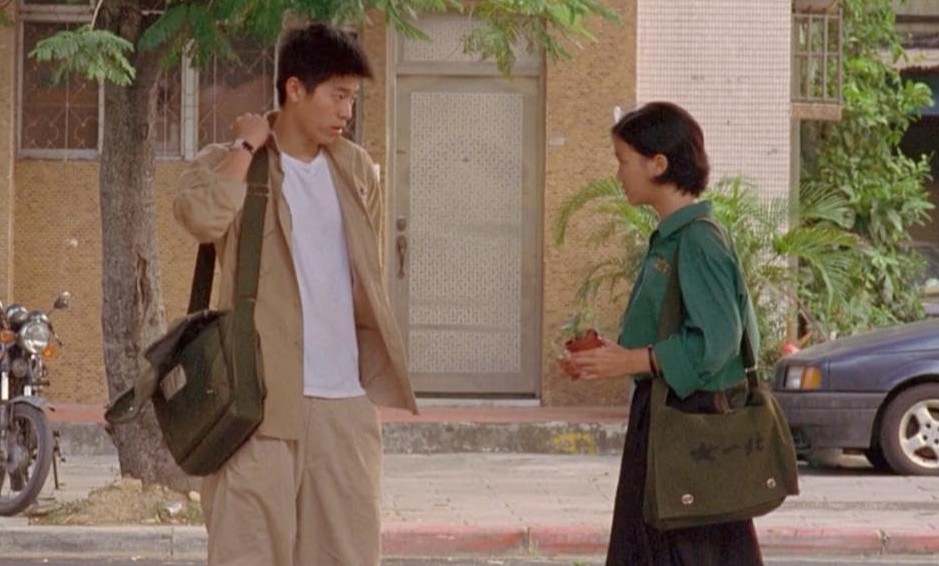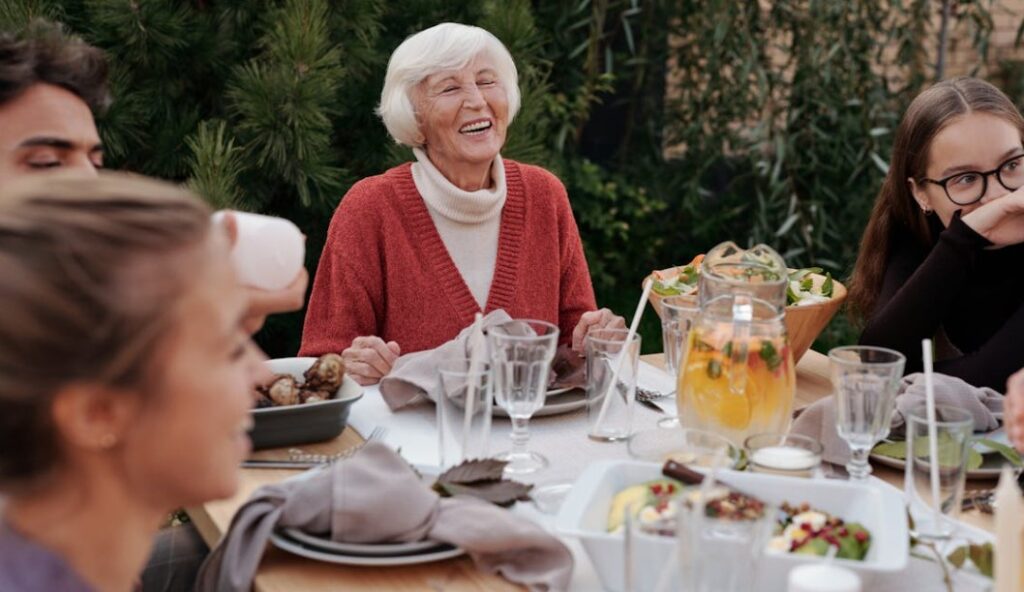As writers and engineers of stories, imagery is our bread and butter. In some sense, all the literary devices at your disposal are tools you use to create images in a reader’s mind: moving images with texture, color, and mood. In this article, I will discuss what imagery is, how it is employed through the senses, and then I’ll offer you a powerful Story Weapon to help you amplify the imagery in your own work.
Imagery is your tool for turning words into vivid sensory experiences, using sight, sound, smell, taste, and touch to make scenes feel alive. By consciously integrating all five senses, you can create richer, more immersive stories that transport readers into the world of the narrative.
Table of Contents
Definition of imagery
The technical definition of imagery is: the use of vivid or figurative language to refer to objects, actions, or ideas. To get a better understanding of this literary device, let’s unpack what these images in our head actually are and how to set the scene for your reader.
People visualize things in different ways. That’s part of the beauty of creative expression!
We get to share our inner worlds with people and get a peek into the secret life of others. In this way, we’re able to communicate with a sum of words (some people call these books) something that a direct statement would fail to communicate. These stories are sometimes as vivid as the actual lives we inhabit. At other times, we see something in stories that makes us feel less alone. We are reminded that we’re part of a vast ocean of shared experiences. This is well put in the film Yi Yi, written and directed by Edward Yang:
PANGZI
Life is a mixture of happy and sad things. Movies are so lifelike — that’s why we love them.
TING-TING
Then who needs movies? Just stay home and live life.
PANGZI
My uncle says we live three times as long since man invented movies.
TING-TING
How can that be?
PANGZI
It means movies give us twice what we get from daily life.

Learning to write is like learning how to do magic. The best stories — whether they’re for the screen, the stage, or the page — transport us to a different place, a different state of consciousness. Mind speaks to mind and we’re taken on a journey. So how do different mediums evoke this trance? How is this magic done?
In works for the stage and screen, for example, music and the actors offer auditory and visual cues. We’re repulsed or attracted to certain actors, based on how they portray their characters. Music is its own gift to humanity; it sets the mood of a scene and cues our emotional responses. These are reflections of how a person formulates memories and experiences.
“The moment our discourse rises above the ground-line of familiar facts, and is inflamed with passion or exalted thought, it clothes itself in images . . . This imagery is spontaneous. It is the blending of experience with the present action of the mind. It is proper creation.”
– Ralph Waldo Emerson
Imagery through the 5 senses
As we explore imagery, let’s take a look at examples that invoke each of the five senses: sight, hearing, smell, taste, and touch. By the end, you’ll get a sense (no pun intended) of how a combination of sensual experiences can amalgamate into a mental image.

Sight
To see is to believe! It’s hard to ignore what’s right before our eyes.
Even when you close your eyes, you can form a mental image of almost anything. Just think the word “orange” and an orange (or something you closely associate with that color) will pop into your mind’s eye.
When we remember things or dream, faces and places flow in and out of our awareness. These little pixels, put together, make up an image in a literal sense.
Here are examples of visual imagery from some celebrated writers.
- From Stephen King: “The river ran red, reflecting the crimson sky.”
- From Bob Dylan: “It was a freezing winter with a snap and a sparkle in the air, nights full of blue haze. It seemed like ages ago since I’d lay in the green grass and it smelled of true summer–glints of light dancing off lakes and yellow butterflies on the black tarred roads.”
- From Percy Bysshe Shelley: “Two vast and trunkless legs of stone stand in the desert… Near them, on the sand, half sunk a shattered visage lies, whose frown and wrinkled lip, and sneer of cold command, tell that its sculptor well those passions read…”
Notice how the effect that color has on the visual image. Just as a painter uses a palette, you can use a variety of colors to reflect the mood and texture of a moment. This is a good mental exercise when you’re writing your scenes.
What do your characters see, exactly? You don’t have to describe it all to us, but it’s helpful if you know. If they’re angry, would they notice any blue hues in the room or is it all red? Think about your own memories, especially the important ones. What visual cues stand out? These are probably the ones you want to focus on when you write your visual imagery.

Sound
To hear is to believe? Maybe not so much, but it’s hard to deny the effect that sound has on us. The music you listen to and the natural harmony (or cacophony) you hear in your daily life both inform the way you remember things.
Things have natural notes that they play; the birds sing high and the men murmur low, the explosions make your ears ring but you have to lean in to hear the babbling of a brook. Describing how the events in your book sound is a great way to add texture and take a break from the natural bias we all have to visual cues.
Here are some examples of auditory imagery:
- From Gabriel García Márquez: “The day that she saw him pass by her bedroom she thought that Pietro Crespi was a sugary dandy next to that proto-male whose volcanic breathing could be heard all over the house.”
- From Vladimir Nabokov: “Lolita, light of my life, fire of my loins. My sin, my soul. Lo-lee-ta: the tip of the tongue taking a trip of three steps down the palate to tap, at three, on the teeth. Lo. Lee. Ta.”
- From Emily Bronte: “Presently the whole chapel resounded with rappings and counter rappings: every man’s hand was against his neighbour; and Branderham, unwilling to remain idle, poured forth his zeal in a shower of loud taps on the boards of the pulpit, which responded so smartly that, at last, to my unspeakable relief, they woke me. And what was it that had suggested the tremendous tumult?”
Sound and its vibrations are key to our experience.
As writers of the page, you may not get to suggest which songs they use for your movie adaptation or how the score will sound in your screenplay. You can’t control what your reader will be hearing when they read your book. What you can control is the sounds they imagine. The whistle of a train makes it more real. Likewise, the whistle of a kettle, though a totally different sound, also makes it more real.
You can even “turn the sound up” in your descriptions to overwhelm your characters and show us their anxiety. Give us the cacophony they’re experiencing. Let us share in the character’s soundscape.

Smell
A good smell goes easily unnoticed, but it’s hard to miss a stench. Though we’re often less aware of what we smell than what we see and hear, our brain is always picking up scents. Some of that information is transmitted to us on a subconscious level and we pick it up elsewhere. The pheromones in the air make someone more attractive to us, while someone’s rancid breath can make our stomach clench. You may not have many smell memories, or maybe your olfactory is working overtime.
Here are some examples of how writers have made us sniff:
- From Harper Lee: “When supper was over, Uncle Jack went to the living room and sat down. He slapped his thighs for me to come sit on his lap. I liked to smell him: he was like a bottle of alcohol and something pleasantly sweet.”
- From Mark Twain: “Then the nice breeze springs up, and comes fanning you from over there, so cool and fresh and sweet to smell on account of the woods and the flowers; but sometimes not that way, because they’ve left dead fish laying around, gars and such, and they do get pretty rank…”
- From Virginia Woolf: “Some winey smell mixed with it and intoxicated her, for she felt again her own headlong desire to throw herself off the cliff and be drowned looking for a pearl brooch on a beach.”
What we see and hear might set a scene, but smell is what makes it vivid. It grounds us in a moment and brings to mind memories we’d forgotten.
Try to note in your daily life how the different smells around you affect how you feel. Do you notice if someone smells like perfume, and does it change how you perceive them? How about the smell of what’s on the stove? Smell is an often neglected part of imagery and it’s a good way to spice up your prose.

Touch
Tactile experience connects us to our body and we all react to touch differently. Some of us have calluses on our feet and hands, meaning we might enjoy the rough feel of gravel or chalk. Some of us have softer skin, more used to silks and furs than iron.
Touch is an interesting one when it comes to memory; we don’t often remember how things physically felt, unless they were very pleasurable or very painful. Even memories of dreams tend to be more visual and auditory. There’s no doubt, however, that touch grounds us and the present moment is full of physical sensation if you’re paying attention.
Here are some examples of tactile imagery:
- From Joseph Conrad: “Well, you may guess I watched the fog for the signs of lifting as a cat watches a mouse; but for anything else our eyes were of no more use to us than if we had been buried miles deep in a heap of cotton-wool. It felt like it, too—choking, warm, stifling.”
- From Mikhail Bulgakov: “Logs were blazing in the huge antique fireplace, despite the hot spring day. And yet it was not the least bit hot in the room, and even quite the contrary, on entering one was enveloped in some sort of dankness as in a cellar.”
- From Charles Dickens: “It was a dry cold night, and the wind blew keenly, and the frost was white and hard.”
There’s so much to play with in tactile imagery. Things can be soft and they can be hard; they can be wet to the touch or dry as a bone; they can make us feel warm or too hot or chilly or freezing.
As with the other senses, pay attention to how your body feels with different types of fabrics and environments. This is part of the adventure of writing; it can open you up to new experiences in your own life. Take the plunge and see if you come up dry.

Taste
To taste the fruits of life, we have to risk bitterness. The sense of taste—no, not the aesthetic sort of taste—is obviously a big part of eating. Our diets inform how our bodies feel and how we live. This is a funny one that many writers miss; think about how much of your day is spent eating and how little you read about your character’s meals. Somewhere between the tragic losses and exciting action, let them have a snack at least.
The feeling on our tongues also plays into the pH balance of our bodies; sometimes we have a bitter taste in our mouths, even if nothing is there.
Here are a few literary examples of taste imagery:
- From Alduous Huxley: “Told them of the growing embryo on its bed of peritoneum. Made them taste the rich blood surrogate on which it fed. Explained why it had to be stimulated with placentin and thyroxin. Told them of the corpus luteum extract.”
- From Toni Morrison: “But the baby’s thrilled eyes and smacking lips made them follow suit, sampling one at a time the berries that tasted like church.”
- From Margaret Mitchell: “Gulping down the bitter brew of parched corn and dried sweet potatoes that passed for coffee, she went out to join the girls.”
Taste is one of the rare pieces of texture that visual mediums can’t quite capture like the written word can. For something to be scrumptious or bitter, for it to make a character dig in for more or hurriedly scarf down, it has to exist with such richness in your imagery. How does the food in your books taste? If the characters eat well, that’s a different energy. If they live in a dystopia of bland smoothies, that’ll certainly come across in how they speak and act. These are the subtle clues that make up the flavor of our human experience. Bringing that forth to your reader is a great way to flesh out your imagery.
Hopefully, thinking about imagery in alignment with your senses makes you more excited to bring it into your writing. Things can get a bit rote when you’re only showing how it looks; we’re blessed with perception far beyond that. When you mix a few of these together, you’ll be participating in the magical art of shaping someone’s imagination. Make your writing textured and rich; the pages will turn themselves.
Your story weapon: Embrace the senses
In our writing, we often rely upon one or two of the five senses. But have you ever used all of them before?
Try this: In five minutes, write a scene that employs all five senses. Notice how the scene becomes more alive.
Ready to dig into your story further? Join one of my workshops here: The 90-Day Novel, The 90-Day Memoir, Story Day







